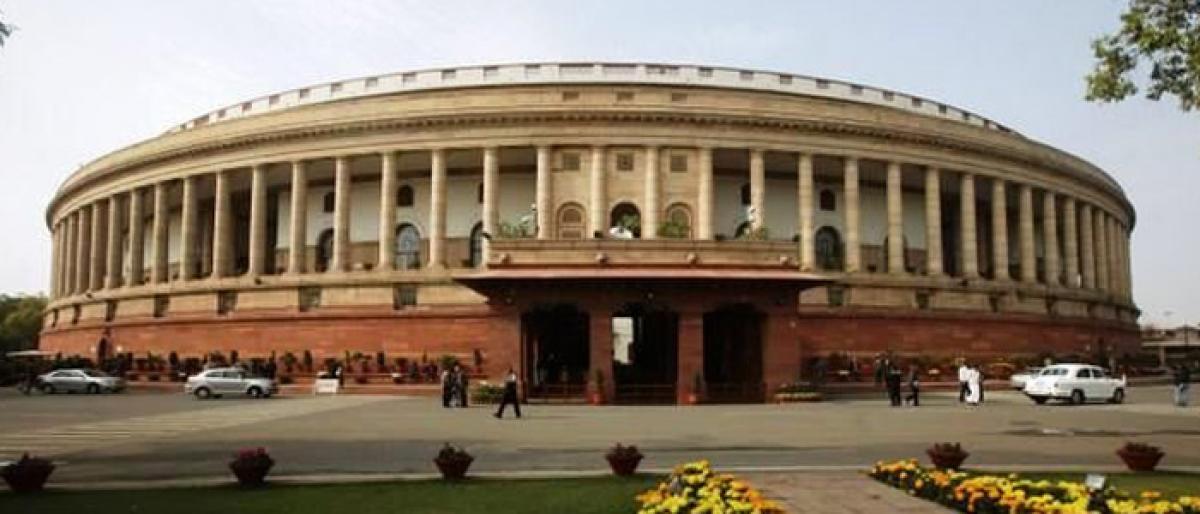Live
- Utpanna Ekadashi 2024: Date, Rituals, and Significance
- New Criminal Laws: An Era of Transformation of the Criminal Justice System
- India among top 10 countries with AI readiness: Report
- UNICEF to support Kerala's children with special needs
- Meta purges over 2 million accounts linked to scam centres
- Mumbai, Delhi ranked among top 5 prime residential markets in Asia-Pacific
- Russia provided North Korea with anti-air missiles in exchange for troop deployment
- PCB appoints Azhar Ali as head of youth development
- Deepam-2 Scheme Reaches 5 Million Beneficiaries in Three Weeks, says Nadendla Manohar
- Will RG Kar tragedy impact Bengal bypoll results?
Just In

Nomination of candidates to the Rajya Sabha both in the states of Andhra Pradesh and Telangana by mainstream political parties is complete. As usual different combinations have prevailed in the selection of the candidates.
Nomination of candidates to the Rajya Sabha both in the states of Andhra Pradesh and Telangana by mainstream political parties is complete. As usual different combinations have prevailed in the selection of the candidates. In Telangana social equity and loyalty seems to have been the criteria in the selection of the candidates by ruling party while opposition preferred an ST as a candidate. However, in Andhra Pradesh it is the dominant community factor and financial interests which seem to have decided the selection of the candidates.
That brings us to the fundamental question what Raja Sabha or the upper houses are supposed to represent. Modelled on the House of Lords in England, the Rajya Sabha is supposed to represent the intellectual talent of the country. Those who could not come through the rigours of the direct election but whose services and intellect are required in guiding the destiny of the country are supposed to find representation in the Rajya Sabha. In a country like India if properly planned upper houses can be the forum to represent communities who are numerically small in number and hence may not be in a position to get represented in the direct elections. I’ll be discussing this second aspect of representation in this article.
In a highly socially stratified community like ours with substantial economic inequalities, across the country it is the dominant communities in respective constituencies that get represented in the direct elections on behalf of different political parties. Even if they are 10% to 15% of overall population in the constituency but due to the dominant position they hold and the fact that all other communities individually are much smaller in number gives them the advantage in seeking and getting political representation in different political parties.
This leaves out a rainbow of communities even though if come together can be a force in the direct elections but because of their individual limitations are not able to make it to the centres of power in the direct elections. Indirect elections provide a golden opportunity for the political parties to provide representations of these communities so that their interests also properly get represented in the political spectrum.
But political parties have taken these communities for granted and are also using the indirect election route to represent the same dominant community interests as well as financial interests. If one analyses the selection of candidates in the state of Andhra Pradesh both by the party in power as well as the opposition the same trend is maintained. With reference to the opposition party one can understand the predicament given the possibility of poaching and the need to have a candidate who is financially strong to keep the herd together.
Ruling party has no such problem hence could have utilised the opportunity to provide representation to underrepresented communities by nominating them to the upper house. But after a lot of leaks of social equity being followed in selection of candidates final result was that the selection represents the dominant community and financial interests of the ruling party.
When one talks of proper representation to the unrepresented communities one is talking of small communities like the barbers, the washermen, weavers Salivahanas, Brahmins, Vysyas and others who are not properly represented in the political spectrum. Since Dalits are adequately represented through a constitutional provision upper house should be used as a vehicle for providing a presentation to the other small communities.
It is an unfortunate commentary on the political system in the country that interests of these small communities go totally unrepresented in a direct electoral system. The indirect elections which could have taken care of their interests are also used by the political parties to represent the same financial interests, dominant community interests and personal interests rather than the interests of these unrepresented communities.
If these interest groups and communities can form a rainbow coalition, they can also be an important force is the direct elections and can as well come to power since together they represent a majority in each one of these constituencies. But that requires a political party committed to their interest and a leader who can see this opportunity and channelise it properly. This opportunity is available in the new state of Andhra Pradesh.
Whether Jaganmohana Reddy, the BJP or Pawan Kalyan can galvanise these forces and build a rainbow coalition of these small communities would in fact decide the future political course in the state of Andhra Pradesh. When Obama can win US elections with the help of such rainbow coalition it is a realistic possibility in the state of Andhra Pradesh as well.

© 2024 Hyderabad Media House Limited/The Hans India. All rights reserved. Powered by hocalwire.com







